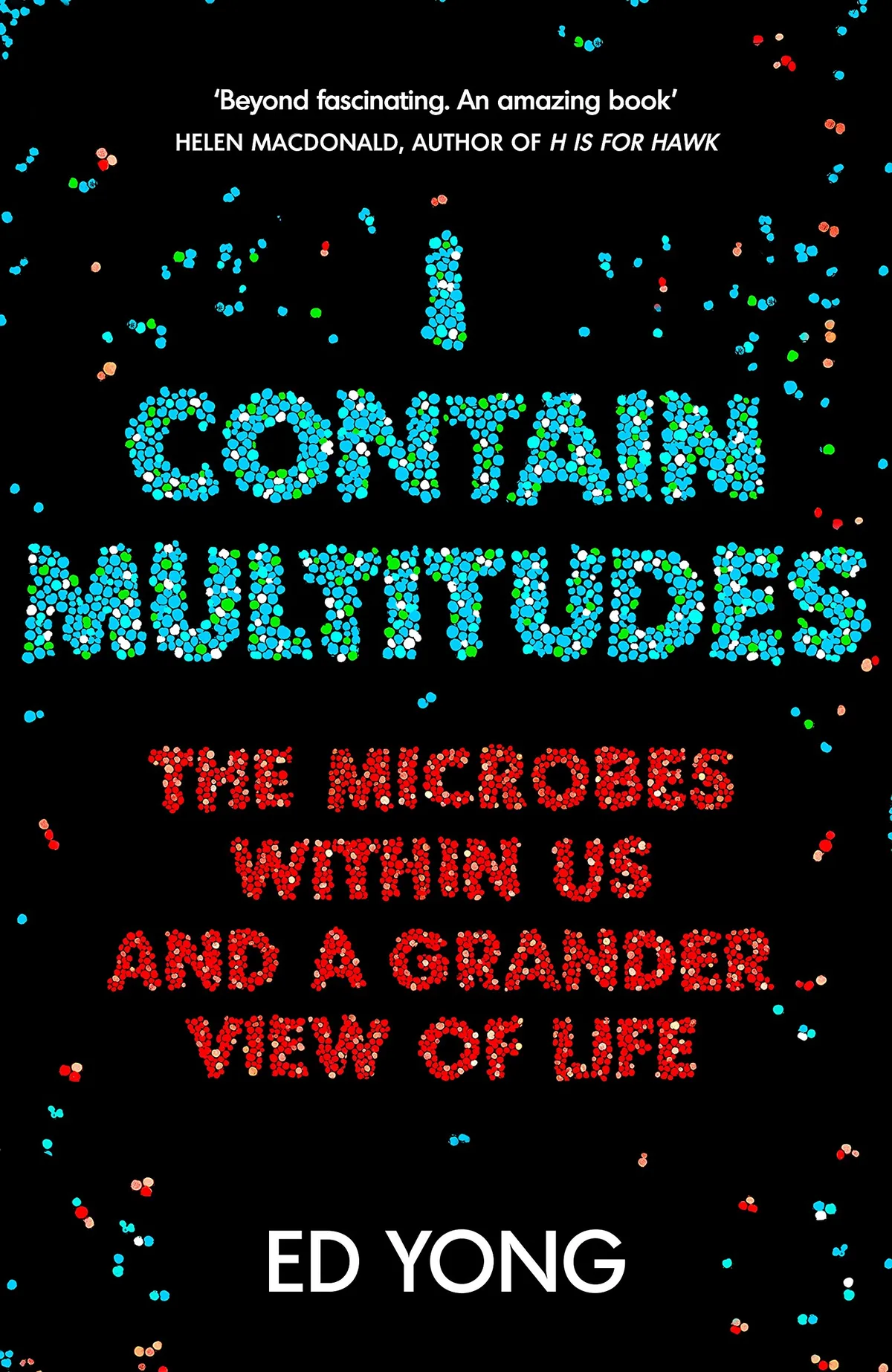The annualWellcome Book Prizecelebrates the best new fiction and non-fiction books that engage with an aspect of medicine, health or illness, and each week until the announcement of the winner on 24 April at the Wellcome Collection we will befeaturing an extractfrom the WBP2017 shortlist here onsciencefocus.com.
See the full shortlist at the bottom of this extract, but first read the introduction from Ed Yong'sI Contain Multitudes, exploring the many varieties of microbes that cover our bodies,invitingus to marvel at ourselves and other animals in a new light, less as individuals and more as thriving ecosystems.
Baba does not flinch. He is unfazed by the throng of excited kids who have gathered around him. He is unperturbed by the Californian summer heat. He does not mind the cotton swabs that brush his face, body and paws. His nonchalance makes sense, for his life is safe and cushy. He lives in San Diego Zoo, wears an impregnable suit of armour, and is currently curled around the waist of a zookeeper. Baba is a white-bellied pangolin– an utterly endearing animal that looks like a cross between an anteater and a pine cone. He’s about the size of a small cat. His black eyes have a doleful air, and the hair that frames his cheeks looks like unruly mutton chops. His pink face ends in a tapering tooth-less snout that’s well adapted for slurping up ants and termites. His stocky front legs are tipped with long, curved claws for clinging to tree trunks and tearing into insect nests, and he has a long tail for hanging off tree branches (or friendly zookeepers).
But his most distinctive features, by far, are his scales. His head, body, limbs and tail are covered in them – pale orange, overlapping plates that create an extremely tough defensive coat. They are made of the same material as your nails – keratin. Indeed, they look and feel a lot like fingernails, albeit large, varnished, and badly chewed ones. Each one is flexibly but firmly attached to his body, so they sink down and spring back as I run my hand down his back. If I stroked him in the opposite direction, I’d probably cut myself – many of the scales are sharp-edged. Only Baba’s face, belly and paws are unprotected, and if he chose to, he could easily defend them by rolling up into a ball. It’s this ability that gives his kind their name: pangolin comes from the Malay wordpengguling, meaning ‘something that rolls up’.
Baba is one of the zoo’s ambassador animals' – exceptionally docile and well-trained individuals who take part in public activities. Keepers frequently take him to nursing homes and children’s hospitals to brighten up the days of sick people, and to teach them about unusual animals. But today, he gets the day off. He just sits around the keeper’s midriff, like the world’s strangest cummerbund, while Rob Knight gently dabs a cotton swab against the side of his face. ‘This is one of the species that I’ve been captivated by since I was a kid'– just that something like that exists,’ he says.
Knight, a tall, lanky New Zealander with buzzcut hair, is a scholar of microscopic life, a connoisseur of the invisible. He studies bacteria and other microscopic organisms – microbes – and he is specifically enthralled by those that live in or on the bodies of animals. To study them, he must first collect them. Butterfly collectors use nets and jars; Knight’s tool of choice is the cotton swab. He reaches over with a small bud and rolls it over Baba’s nose for a couple of seconds, long enough to infuse the end with pangolin bacteria. Thousands, if not millions, of microscopic cells are now entangled in the white fuzz. Knight moves delicately so as not to perturb the pangolin. Baba couldn’t look less perturbed if he tried. I get the feeling that if a bomb went off next to him his only reaction would be to fidget slightly.
Baba is not just a pangolin. He is also a teeming mass of microbes. Some of them live inside him, mostly in his gut. Others live on the surface, on his face, belly, paws, claws, and scales. Knight swabs each of these places in turn. He has swabbed his own body parts on more than one occasion, for he too hosts his own community of microbes. So do I. So does every beast in the zoo. So does every creature on the planet, except for a few lab animals that scientists have deliberately bred to be sterile.
All of us have an abundant microscopic menagerie, collectively known as themicrobiotaormicrobiome.1They live on our surface, inside our bodies, and sometimes inside our very cells. The vast majority of them are bacteria, but there are also other tiny organisms including fungi (such as yeasts) and archaea, a mysterious group that we will meet again later. There are viruses too, in unfathomable numbers – aviromethat infects all the other microbes and occasionally the host’s cells. We can’t see any of these minuscule specks. But if our own cells were to mysteriously disappear, they would perhaps be detectable as a ghostly microbial shimmer, outlining a now-vanished animal core.2
In some cases, the missing cells would barely be noticeable. Sponges are among the simplest of animals, with static bodies never more than a few cells thick, and they are also home to a thriving microbiome.3Sometimes, if you look at a sponge under a microscope, you will barely be able to see the animal for the microbes that cover it. The even simpler placozoans are little more than oozing mats of cells; they look like amoebae but they are animals like us, and they also have microbial partners. Ants live in colonies that can number in their millions, but every single ant is a colony unto itself. A polar bear, trundling solo through the Arctic, with nothing but ice in all directions, is completely surrounded. Bar-headed geese carry microbes over the Himalayas, while elephant seals take them into the deepest oceans. When Neil Armstrong and Buzz Aldrin set foot on the Moon, they were also taking giant steps for microbe-kind.
When Orson Welles said ‘We’re born alone, we live alone, we die alone’, he was mistaken. Even when we are alone, we are never alone. We exist in symbiosis – a wonderful term that refers to different organisms living together. Some animals are colonised by microbes while they are still unfertilised eggs; others pick up their first partners at the moment of birth. We then proceed through our lives in their presence. When we eat, so do they. When we travel, they come along. When we die, they consume us. Every one of us is a zoo in our own right'– a colony enclosed within a single body. A multi-species collective. An entire world.
Footnotes
- In this book, I use the terms ‘microbiota’ and ‘microbiome’ interchangeably. Some scientists will argue that microbiota means the organisms themselves, while microbiome refers to their collective genes. But one of the very first uses of microbiome, back in 1988, used the term to talk about a group ofmicrobesliving in a given place. That definition persists today – it emphasises the ‘biome’ bit, which refers to a community, rather than the ‘ome’ best, which refers to the world of genomes.
- This imagery was first used by the ecologist Clair Folsome (Folsome, 1985)
- Sponges: Thacker and Freeman, 2012; placozoans: personal communication from Nicole Dubilier and Margaret McFall-Ngai.

The full 2017 Wellcome Book Prize shortlist is:
- How to Survive a PlaguebyDavid France(USA)Picador, Pan Macmillan
- When Breath Becomes AirbyPaul Kalanithi(USA)The Bodley Head, Penguin Random House
- Mend the LivingbyMaylis de Kerangal(France) trans.Jessica MooreMacLehose Press
- The Tidal ZonebySarah Moss(UK)Granta Books
- The GenebySiddhartha Mukherjee(USA)The Bodley Head, Penguin Random House
- I Contain MultitudesbyEd Yong(UK)The Bodley Head, Penguin Random House

Follow Science Focus onTwitter,Facebook, Instagramand Flipboard